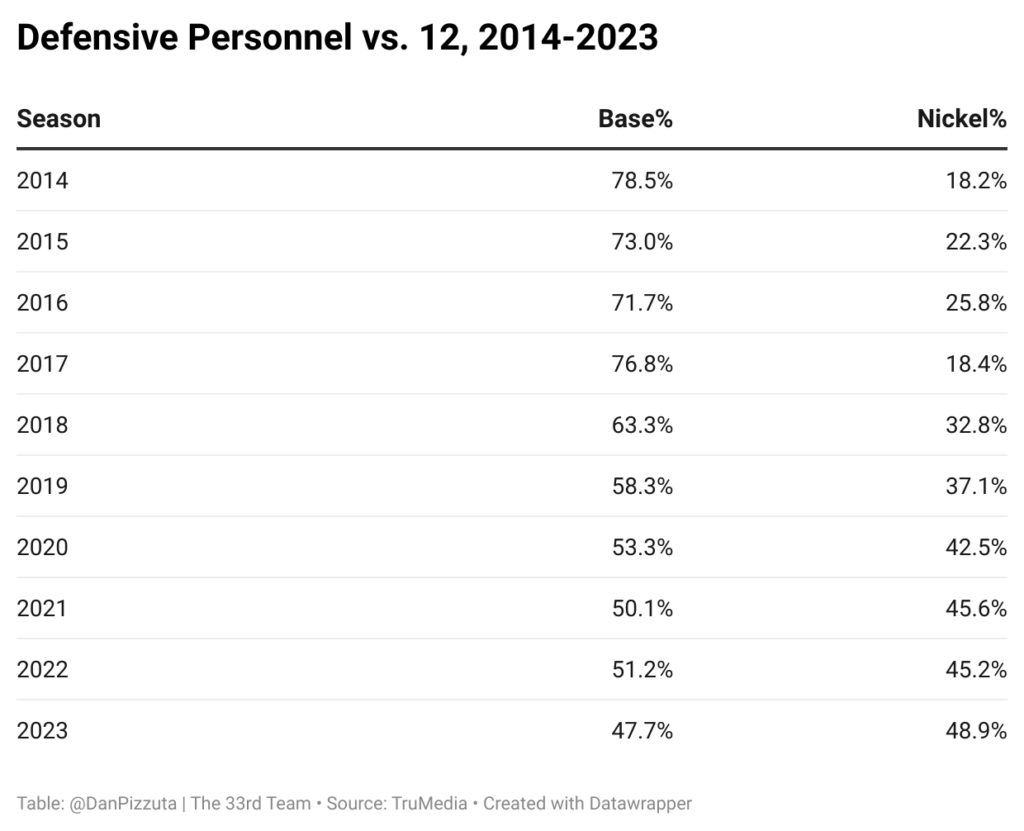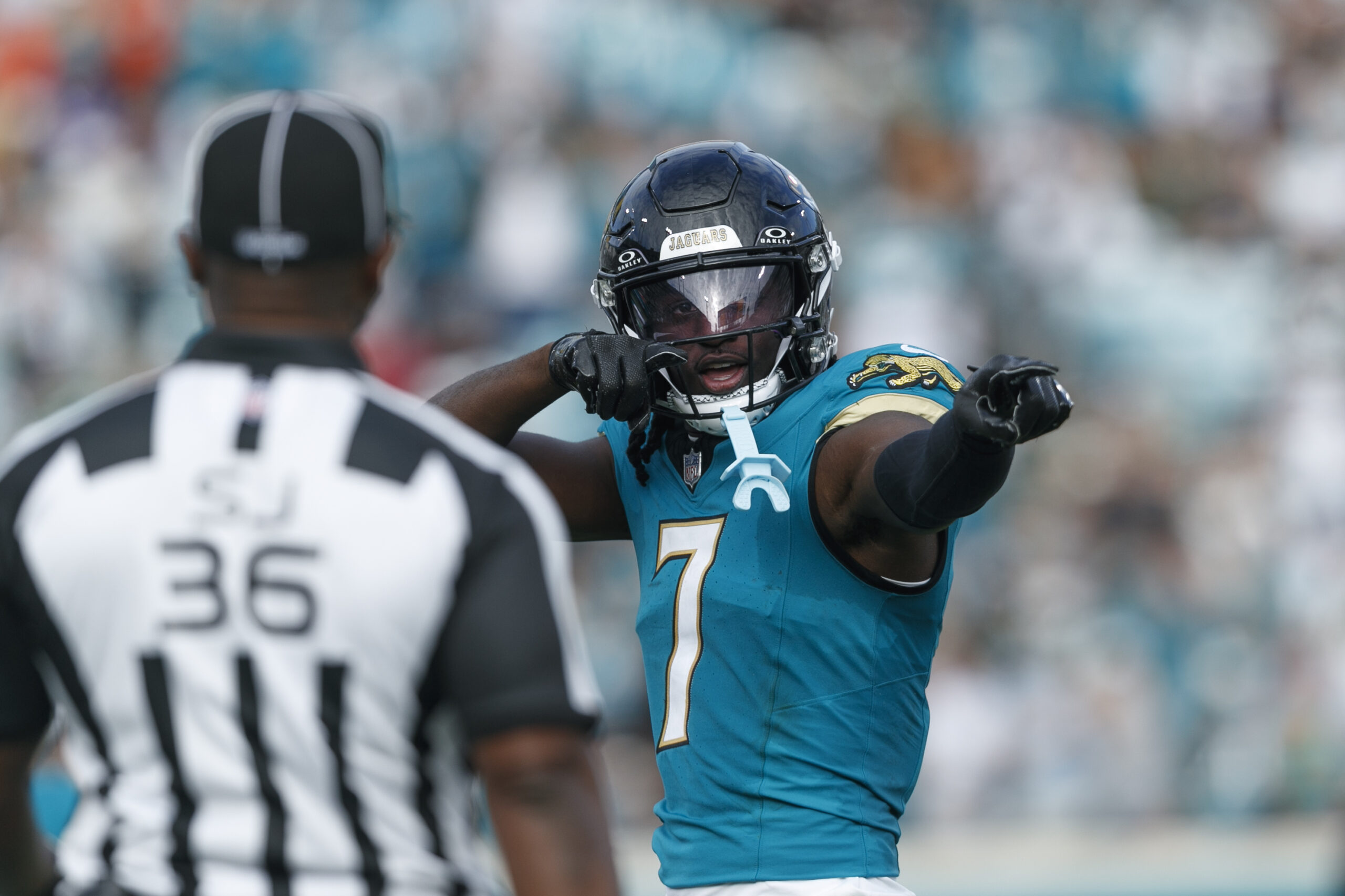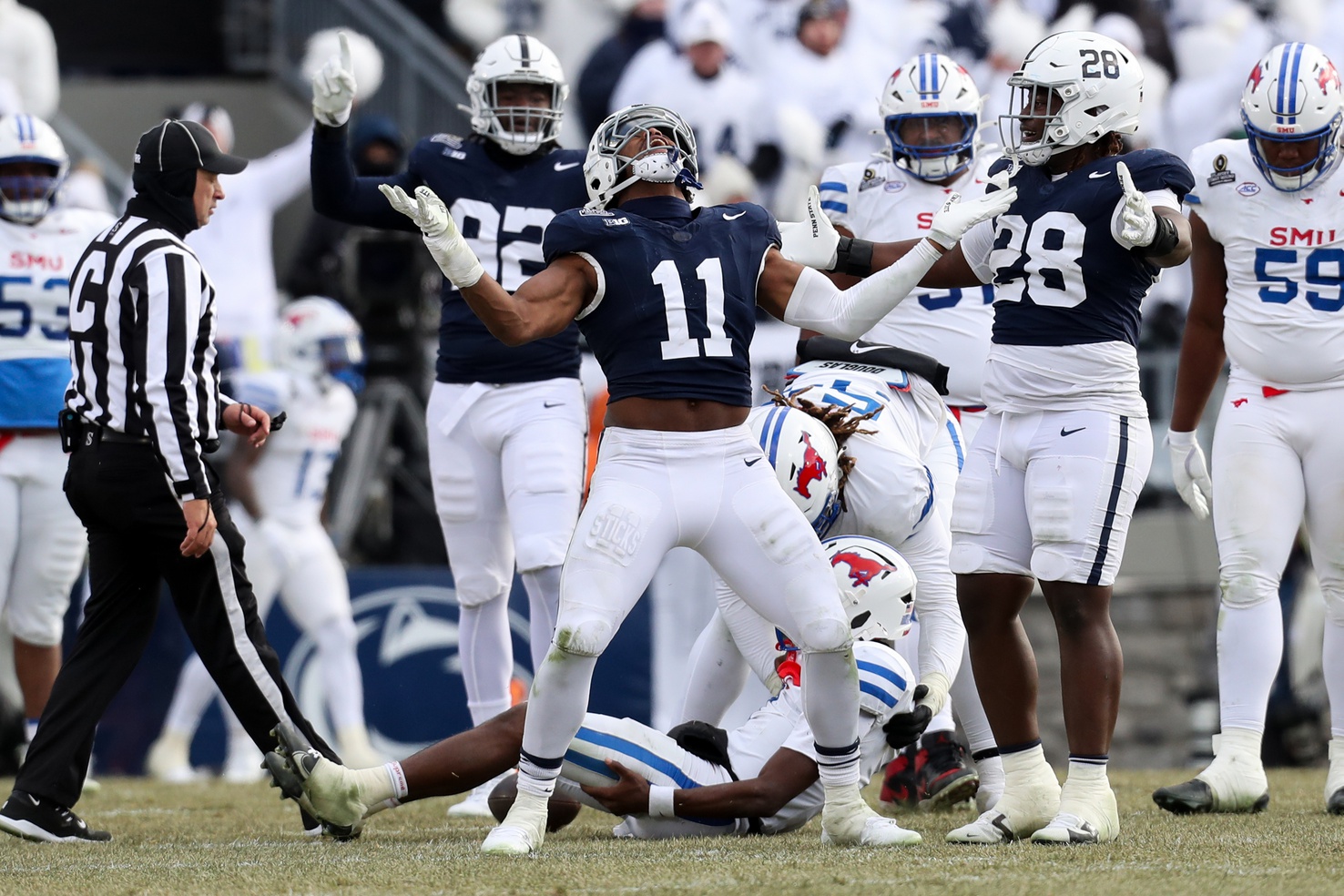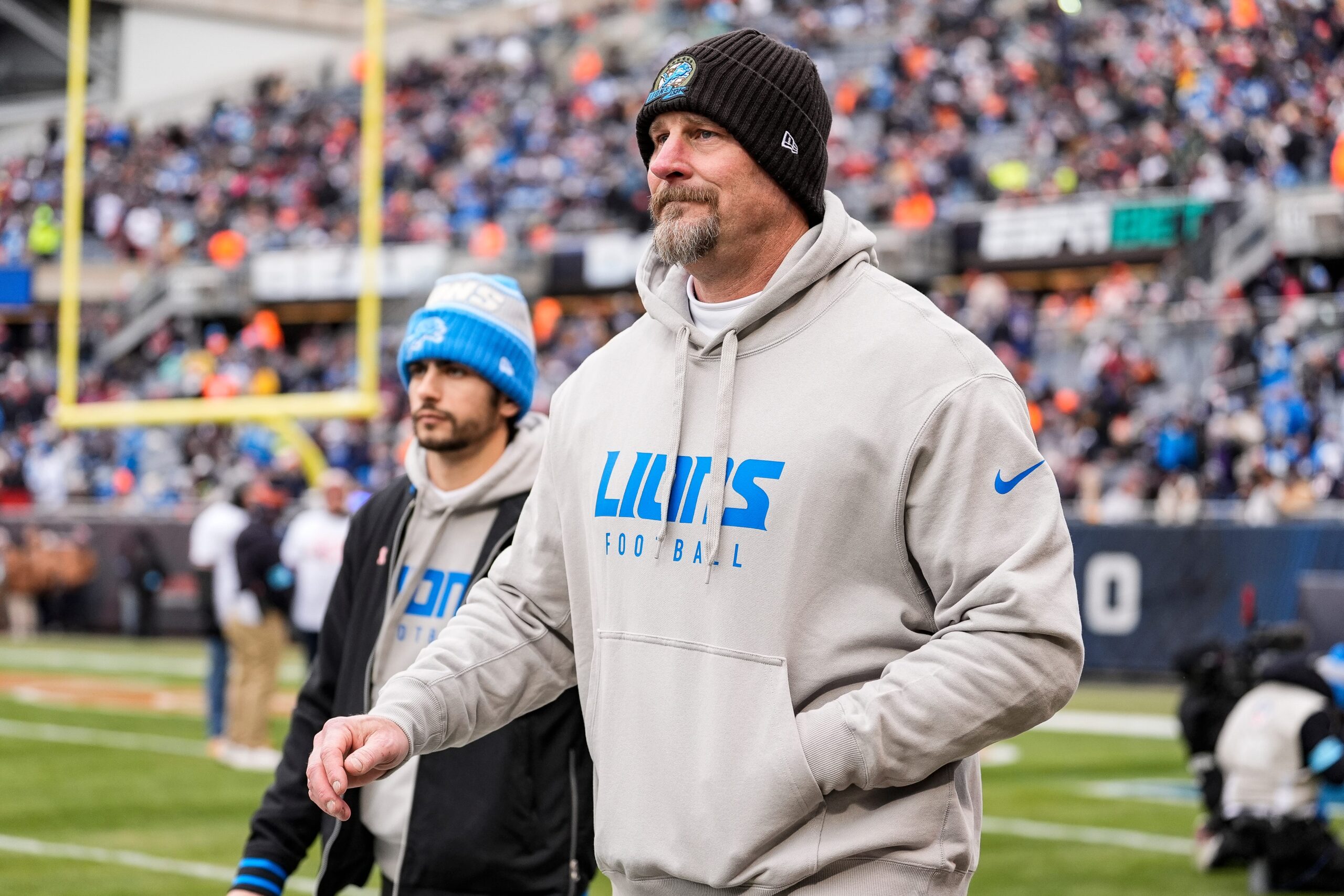NFL Analysis
5/31/24
7 min read
The Tight End Revolution: Rethinking Offense in the NFL's 12-Personnel Era

A true pass-catching tight end can change an offense. When those players hit, they instantly become a value that lasts long-term into second and third contracts.
Because an exceptional tight end can change an offense, teams have put considerable resources into finding one. Despite the position's historical slow burn for development, we've seen at least one first-round tight end in six of the past eight drafts.
Some of those tight ends are considered more of an offensive weapon than a traditional in-line option. The idea is that the offense can use two tight ends simultaneously, with one playing a de facto receiver role to present a matchup conflict for opposing defenses — should they match with a base defense and lose some speed or go with nickel personnel and give up some size?
12-Personnel Excitement
This is part of the idea behind the Las Vegas Raiders drafting Brock Bowers one year after drafting Michael Mayer in the second round. The Buffalo Bills also noted this when they drafted Dalton Kincaid in 2023.
Several teams, from the Raiders and Bills to the Baltimore Ravens and Green Bay Packers, might lean toward this style of 12 personnel this season.
We're hearing similar excitement from around the league.
"When you have two guys like that who are dynamic, mismatches all over the field, doesn't matter where you put us, that's tough to gameplan for," Mark Andrews said of the pairing of him and Isaiah Likely in Baltimore this year.
"Who's going to guard both of us?" Michael Mayer asked of him and Bowers. "If you put 'backer, put a small safety here, like, I'm a big body, Brock is a big body. It's going to be a lot of fun."
In a league that is still increasing the rate of 11 personnel but trying to find ways to get bigger and more dynamic, tight ends could be an option. However, the rate of 12 personnel has not shifted much during the past decade.
Leaguewide, the rate of 11 personnel has crept up from 53 percent to 63 percent, and the rate of 12 personnel has stayed around 19 percent, per TruMedia.

12-Personnel Is Struggling?
The problem is production from 12 personnel has taken a nose dive from its peak around the 2017-2019 seasons, driven by incredible efficiency in the passing game.

The crux of the issue is that the conflict offenses are hoping to put defenses in with personnel just isn't much of a conflict for modern defenses.
During that peak passing efficiency, defenses matched 12 personnel with base defense between 60 and 70 percent of the time. In 2023, that fell to under 50 percent as there was a near-even split in base and nickel.

Lighter personnel has also led to defenses running fewer stacked boxes. In 2023, defenses stacked the box with eight or more defenders against 12 personnel just 40.5 percent of the time (50.1 percent in 2017), and there was a light box with six or fewer defenders at 21.4 percent (16.8 percent in 2017).
This has essentially put the offense in conflict. The options are to trust the receiving tight end to win against a slot corner (and hope it's better than a third receiver would do) or make the defense pay by running the ball against the lighter personnel (turning your "offensive weapon" into a blocker).
Offenses haven't quite figured this out. With that coverage, tight ends were only targeted on 29 percent of passes out of 12 personnel in 2023, a decade low.
Passing overall, which drove the efficiency at one point, is less emphasized. During the past three seasons, offenses ran more often than passed out of 12 personnel. Still, rushing efficiency did not improve against lighter personnel. In 2023, it was worse than rushing out of 11 or 21 personnel.
Just lining up in 12 personnel isn't enough to confuse defenses anymore. A team like the 49ers can use 21 personnel as a weapon because most of their core can move anywhere. Christian McCaffrey can be in the backfield, slot, or outside… so can Deebo Samuel… so can Kyle Juszczyk… so can George Kittle.
That versatility isn't usually available from 12 personnel. The changeup is just sticking a tight end in the slot. That alone no longer stresses a defense.
Lions' Learnings
Instead, teams must find ways to introduce misdirection into the offense, opening up the run game. No team does that better than the Detroit Lions, who only used 12 personnel on 20.1 percent of plays (15th) but used it as a weapon, especially in the run game.
Here are back-to-back plays the Lions ran from 12 against the Cowboys in Week 17.
Back-to-back runs for Lions vs Cowboys pic.twitter.com/5yNhlVXXSM
— Dan Pizzuta (@DanPizzuta) May 31, 2024
The first was a jet sweep to Amon-Ra St. Brown to the strong side with both tight ends inline. Sam LaPorta was on the end of the line and got out in space to make a block down the field.
The next play used motion from James Mitchell to get to Demarcus Lawrence on the backside of the run while Frank Ragnow came off a double-team to get to Markquese Bell (14). The motion pulled Bell, who then overpursued into the running lane he thought would open up.
Detroit used motion on 66 percent of its run plays from 12 personnel, the league's fourth-highest rate. The Lions were behind the Dolphins (who motion on everything), the Steelers (same, but for less purpose), and the Rams.
The motion put the defense in conflict. In this play against the Chargers, Eric Kendricks (9) is taken out of the play by following LaPorta's motion, opening the gap for Jahmyr Gibbs to run for 35 yards.
— Dan Pizzuta (@DanPizzuta) May 31, 2024
Of course, it also helps when the top tight end can take on a player like Maxx Crosby, who might be the league's best run-stopping edge rusher.
Sam LaPorta - Maxx Crosby pic.twitter.com/LFZZu5DHGy
— Dan Pizzuta (@DanPizzuta) May 31, 2024
The Lions figured out how to use their personnel as a mismatch. LaPorta plays as a more traditional tight end, so he can be inline to take on blocks or spring out to be a threat as a pass catcher.
That alone would help. But sending him and other players in motion keeps the defense on its toes. So does changing up who carries the ball. The Lions had big gains from St. Brown and Jameson Williams on misdirection runs.
Detroit brings the threat of a successful run on all of these plays, which opens up more in the passing game. The Lions were the only team with positive EPA on passes and runs from 12 personnel last season. However, not every team can be as physical as Detroit on the ground.
Even some of the best teams with two tight ends on the field, like Baltimore and San Francisco, were so good at passing that they more than made up for their struggles on the ground.

But both teams still have a heavy threat of the run in those packages, even if the actual run plays were not a net positive when called.
Of course, this does not mean that teams trying to run more two-tight sets are doomed. With players like Bowers, Kincaid, Likely, and the Green Bay duo of Luke Musgrave and Tucker Kraft, plenty of young, talented tight ends could be dangerous offensive weapons.
Their presence alone might not be enough to put defenses in conflict. Their skill sets should make it easier to be more creative in those looks, and that's where the difference and a possible tight end revolution could shine.







